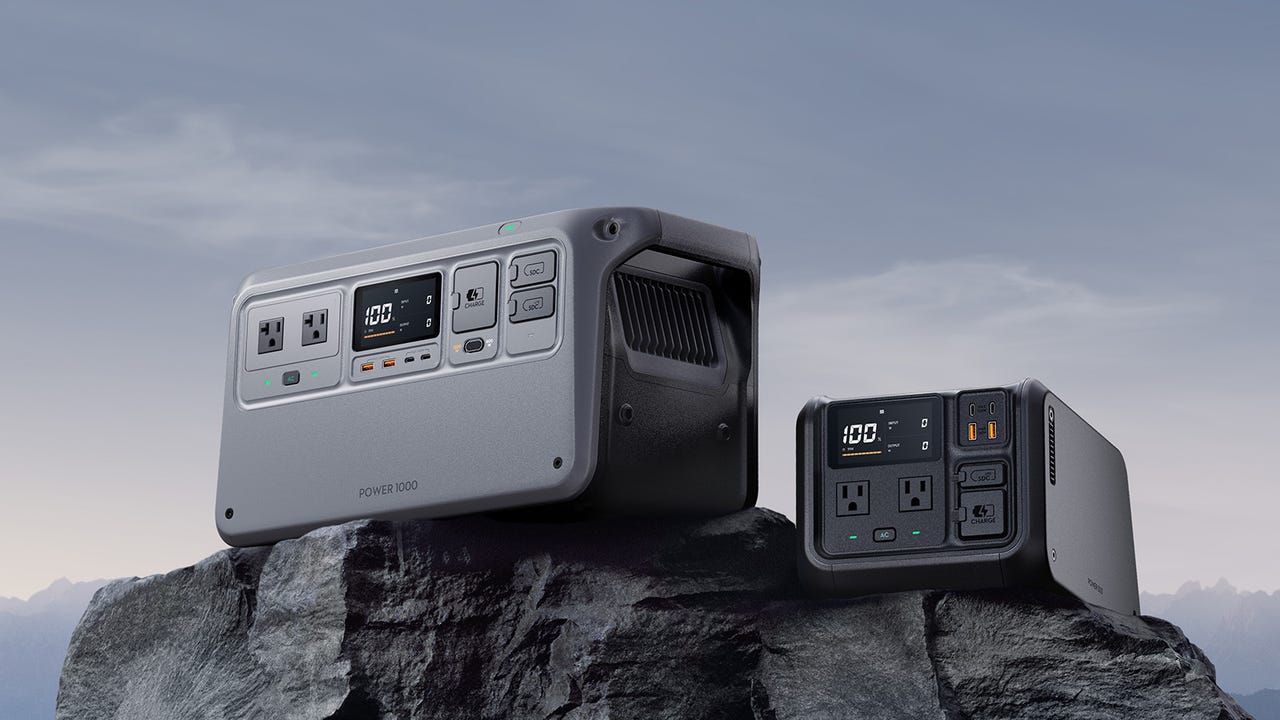'ZDNET Recommends': What exactly does it mean?
ZDNET's recommendations are based on many hours of testing, research, and comparison shopping. We gather data from the best available sources, including vendor and retailer listings as well as other relevant and independent reviews sites. And we pore over customer reviews to find out what matters to real people who already own and use the products and services we’re assessing.
When you click through from our site to a retailer and buy a product or service, we may earn affiliate commissions. This helps support our work, but does not affect what we cover or how, and it does not affect the price you pay. Neither ZDNET nor the author are compensated for these independent reviews. Indeed, we follow strict guidelines that ensure our editorial content is never influenced by advertisers.
ZDNET's editorial team writes on behalf of you, our reader. Our goal is to deliver the most accurate information and the most knowledgeable advice possible in order to help you make smarter buying decisions on tech gear and a wide array of products and services. Our editors thoroughly review and fact-check every article to ensure that our content meets the highest standards. If we have made an error or published misleading information, we will correct or clarify the article. If you see inaccuracies in our content, please report the mistake via this form.
DJI's first portable power stations are packed with features - plus a little something extra


DJI Power 1000 and Power 500
Drones and action cameras share a critical feature: they're powered by rechargeable batteries. DJI, a leader in both drones and action cameras, is leveraging its extensive battery expertise to enter the competitive world of portable power stations.
Introducing two models, the Power 1000 and Power 500, DJI is well-positioned to make a significant impact. Both units are designed for ultra-quiet operation, can be fully charged in just 70 minutes, and feature dual AC and USB-C outputs, catering to a variety of charging needs. While the power stations' features are impressive, both models also have something that will appeal exclusively to drone pilots.
Also: I tested DJI's Avata 2 and it's the fastest, most immersive drone I've ever flown
These power stations are equipped with the Power SDC fast charging function, designed to rapidly charge DJI drones. Using this function, batteries for the Mavic 3 series, Air 3, Inspire 3, and Matrice 30 series of drones can be charged from 10% to 95% in just 30 minutes, a game-changer for drone operators needing quick turnaround times.
DJI Power 1000
The larger of the two, the Power 1000, offers 1024Wh of power. It includes two AC output ports capable of handling continuous loads of 2200W and surge loads of 4400W. Additionally, it has two USB-C ports supporting 140W output, two USB-A ports, and SDC and SDC Lite ports for diverse connectivity options.
This unit weighs 13 kg.
DJI Power 500
For those needing a more compact option, DJI offers the Power 500, a smaller unit that still packs a punch with 512Wh of power. The Power 500 features a similar array of ports as the Power 1000, although it only includes the SDC Lite version and lacks the full SDC port. The AC ports on the Power 500 are designed for continuous loads of 1000W and surge loads of 1600W, making it well-suited for less demanding applications. The USB-C ports provide a solid output of 100W each.
This smaller unit weighs only 7.3 kg.
To illustrate the practical applications of these power stations, let's look at what DJI says they can do in real-world scenarios. The Power 1000, with its 1024Wh capacity, can recharge a smartphone approximately 57 times or keep a car refrigerator running for about 19 hours. This makes it an excellent choice for extended outdoor activities or emergencies where power reliability is crucial.
On the other hand, the smaller Power 500, with its 512Wh capacity, can manage about 28 smartphone recharges or sustain a car refrigerator for just under 10 hours. While it offers less endurance than the Power 1000, it's still quite capable for day trips, shorter outings, or as a backup power source for smaller devices and appliances.
Also: The best portable power stations you can buy: Expert tested
These capabilities make both models versatile tools for a variety of power needs, from daily convenience to critical support in off-grid situations.
Notably, DJI has opted for the safe and durable LiFePO4 (lithium iron phosphate) battery technology in both models. These batteries offer up to 3,000 recharge cycles before reaching the end of their useful lives.
"Over the past several years we've seen travelers and content creators increasingly turn to DJI drones and handheld cameras, to capture and share their experiences, said Christina Zhang, senior director of corporate strategy at DJI. "These users have a demand for fast-charging, worry-free, sustainable power consumption and today we're glad we can address this with the new DJI portable power stations."
The Power 1000 is available for $699, while the Power 500 is $379.